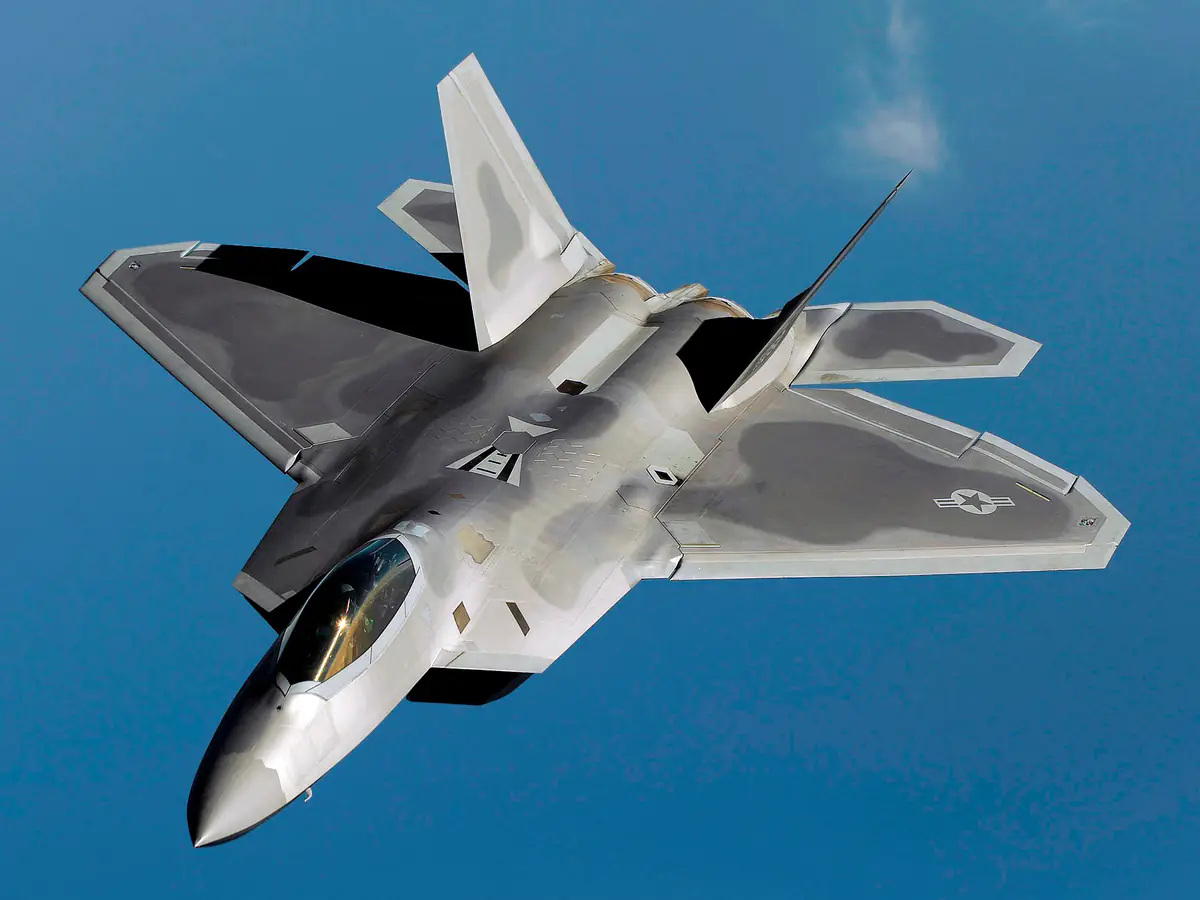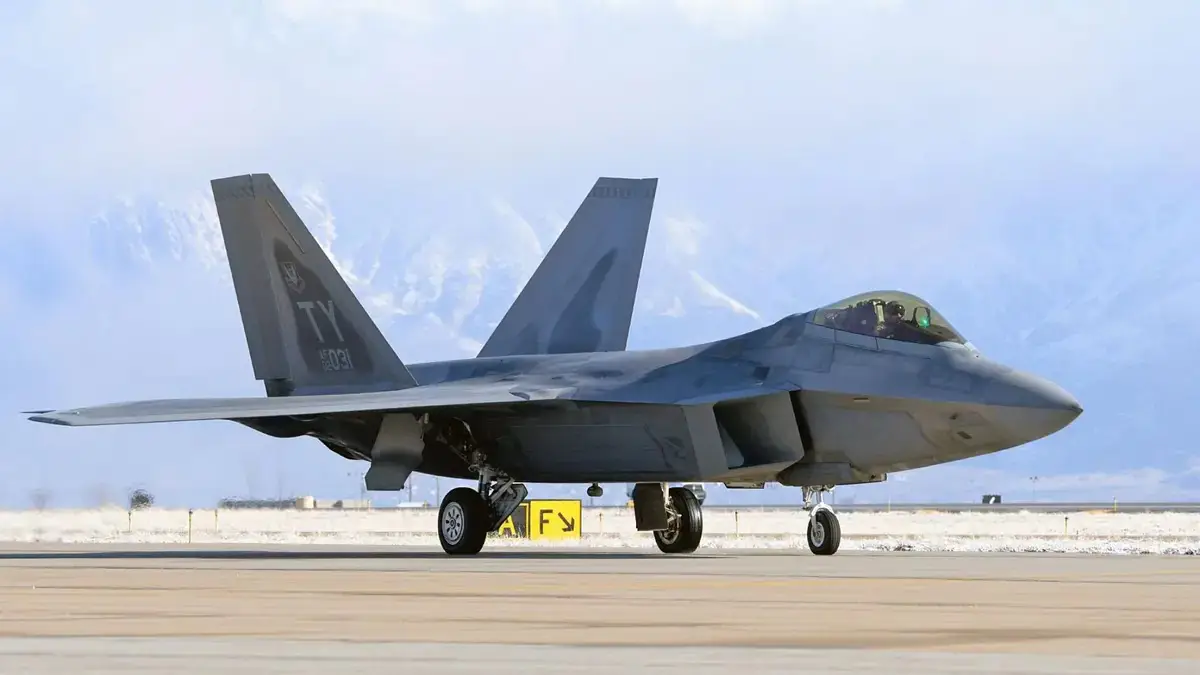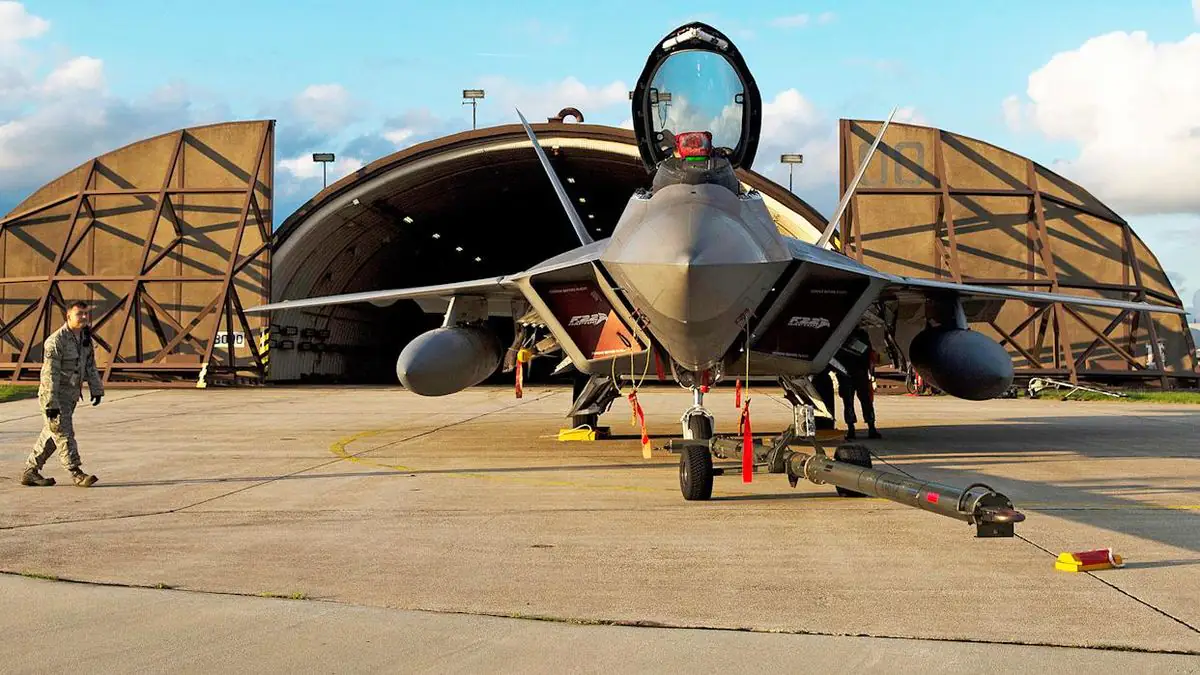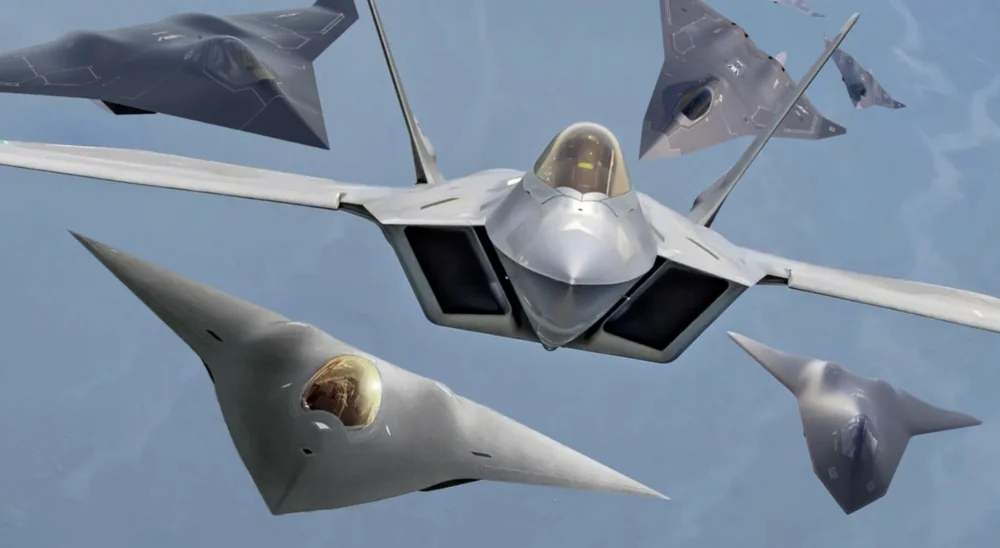F-22 Raptor fighters are set to receive a major upgrade that will enhance their combat effectiveness through integration with unmanned systems acting as loyal wingmen. While the world awaits the arrival of sixth-generation fighter jets, the U.S. continues to focus on improving its fifth-generation aircraft. The U.S. Air Force plans to modernize its F-22 stealth fighters so they can serve as airborne command nodes for future unmanned platforms, known as Collaborative Combat Aircraft (CCA).

This development marks a significant step in integrating unmanned systems with fifth-generation aviation. According to The War Zone, the F-22 is set to become the first combat aircraft equipped to control unmanned aerial vehicles (UAVs). The integration will rely on tablet-based control interfaces, with initial deployment of these systems expected in early fiscal year 2026.
According to the U.S. Air Force’s budget request for fiscal year 2026, a new program titled Crewed Platform Integration (CPI) will begin with an initial allocation of $15 million to upgrade F-22 fighter jets. The Air Force currently operates a fleet of 185 F-22s, of which 143 are combat-ready. The remainder are used for training and testing.
Given the relatively small number of these aircraft and their demanding maintenance needs, the F-22 remains one of the Air Force’s most valuable assets. As part of the CPI initiative, 142 operational F-22s will be equipped with new onboard systems, primarily ruggedized tablets and communication cabling. These upgrades are designed to enable pilots to coordinate more effectively with CCA (Collaborative Combat Aircraft) drones during missions.

Each equipment kit is estimated to cost around $86,200. The newly integrated systems will allow pilots to control unmanned aircraft in real time via touchscreen interfaces built into the F-22 cockpit. This is expected to streamline decision-making during flight operations.
While the Air Force has not disclosed technical specifics about the communication links between the F-22 and drones, the Intra-Flight Data Link (IFDL) appears to be the most likely candidate. IFDL is already used within the F-22 fleet for secure, jam-resistant data sharing between aircraft. Past tests involving the XQ-58A Valkyrie drone have shown successful data transfers between the F-22 and F-35, indicating a potential pathway for expanding communication architecture under the broader CCA (Collaborative Combat Aircraft) program.
Alongside the F-22 upgrades, the U.S. Air Force is seeking \$870 million in the fiscal year 2026 budget to further develop its fleet of CCA drones. Currently, two prototypes for the first phase, known as Increment 1, are in development: the YFQ-42A from General Atomics and the YFQ-44A developed by Anduril.

In the early phases of procurement, the Air Force plans to acquire between 100 and 150 drones, with the goal of expanding the fleet to over 1,000 units by the end of the decade. This aligns with the service’s long-term strategy of integrating unmanned systems across a variety of crewed platforms – not only the F-22, but also the F-35 Lightning II, the upcoming sixth-generation NGAD fighter (sometimes referred to as the F-47), as well as strategic aircraft like the B-21 Raider and aerial refueling tankers.
Ensuring interoperability between these platforms is a key priority. The Air Force, U.S. Navy, and Marine Corps are jointly working on a unified command-and-control architecture to coordinate operations across different systems in a seamless and efficient manner.
Lockheed Martin, the primary manufacturer of both the F-22 and F-35 fighter jets, has already demonstrated a pilot-operated drone control interface that allows a single pilot to manage multiple unmanned aircraft simultaneously. The system features a tablet-style display designed to provide a straightforward, efficient method for issuing commands to tactical drones, while keeping pilot workload to a minimum.

Lockheed Martin representatives have stated that pilots can use touchscreen tablets to direct multiple drones to engage enemy targets, significantly enhancing combat effectiveness. While these tablets are already available to pilots, there are concerns about added workload in single-seat fighters. This has prompted developers to focus on refining control systems – potentially through the use of artificial intelligence – to ease the cognitive burden on pilots.
The growing emphasis on manned-unmanned teaming (CCA) and the integration of the F-22 into such operations mark a shift in the Air Force’s strategic direction. This approach places fifth-generation fighters at the core of a new, networked and autonomous combat framework – combining the strengths of crewed aircraft with the flexibility and reach of unmanned systems to achieve air superiority.
Source: Interestingengineering








